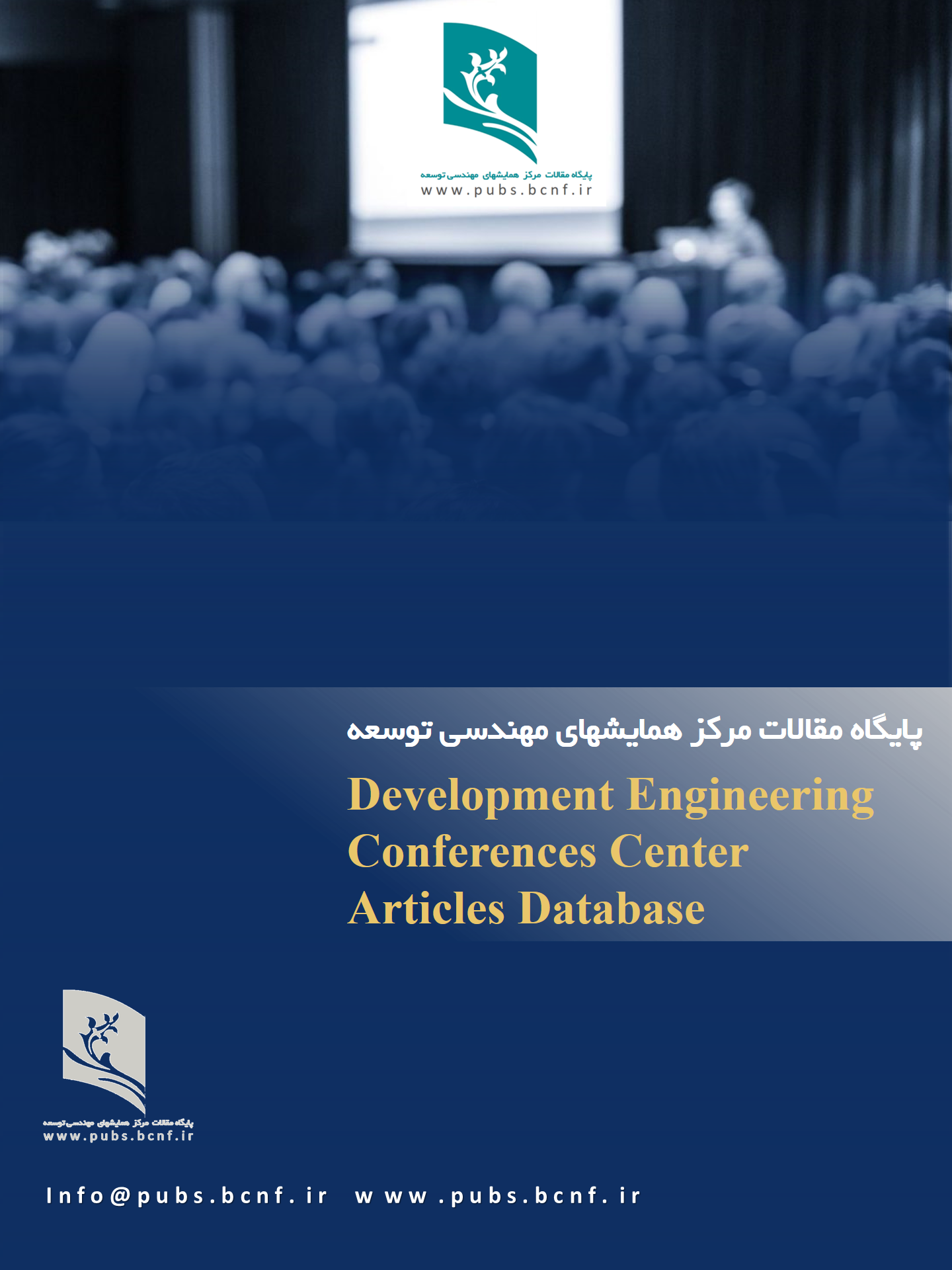عنوان: تحليل عددي ويژگی هاي آيروديناميكی هواپيماي بال زن
Keywords:
پهپاد, پرنده بالزن, حرکت پیچ و پلانچ, بالوارهAbstract
پهپادها به دلیل قابلیتهای منحصربهفرد در زمینههای نظامی و غیر نظامی مورد استفاده و توجه زیادی قرار دارند. پرنده بالزن جزء جدیدترین پهپادهای در حال توسعه است که در آن بال به طور همزمان وظیفه ایجاد نیروی برآ و پیشران را به عهده دارد. هدف از این مقاله، شبیهسازی مدل سه بعدی یک اورنیتوپتر با نرمافزار انسیس فلوئنت، با در نظر گرفتن سرعتهای مختلف پرواز، زوایهحملههای مختلف بال، فرکانسهای مختلف بالزنی و همچنین دامنه بالزنی متفاوت و زاویههای مختلف نصب دم است که به تحلیل و بررسی تاثیر این پارامترهای هندسی و کنترلی بر میزان نیروهای آیرودینامیکی لیفت و درگ پرداخته شده است. در این مقاله، ابتدا حرکت پیچ و پلانچ یک بالواره با استفاده از شبیهسازی عددی مورد اعتبار سنجی قرار گرفته است، سپس با در نظر گرفتن جریان تراکم ناپذیر، سهبعدی و ناپایا، از معادلات ناویر استوکس و مدل توربولانسیSST برای محاسبه مقادیر نیروهای آیرودینامیکی و تاثیر پارامترهای کنترلی بر روی مدل پرنده بالزن طراحی شده، استفاده گردیده است. در پایان نتایج در شرایط مختلف پرواز و تحت تاثیر پارامترهای کنترلی استخراج و مقایسه میگردد.
Downloads
References
1. McMichael, J.M., Micro air vehicles-toward a new dimension in flight. http://www. arpa. gov/tto/MAV/mav_auvsi. html, 1997.
2. Keennon, M. and J. Grasmeyer. Development of two MAVs and vision of the future of MAV design. in AIAA International Air and Space Symposium and Exposition: The Next 100 Years. 2003.
3. Pines, D., Challenges facing small scale flight. PPT downloaded from internet, 2007.
4. Paranjape, A.A., et al., A flight mechanics-centric review of bird-scale flapping flight. International Journal of Aeronautical and Space Sciences, 2012. 13(3): p. 267-281.
5. Keennon, M., K. Klingebiel, and H. Won. Development of the nano hummingbird: A tailless flapping wing micro air vehicle. in 50th AIAA aerospace sciences meeting including the new horizons forum and aerospace exposition. 2012.
6. Ma, K.Y., et al., Controlled flight of a biologically inspired, insect-scale robot. Science, 2013. 340(6132): p. 603-607.
7. del Estal Herrero, A., et al., Flow visualization around a flapping-wing micro air vehicle in free flight using large-scale PIV. Aerospace, 2018. 5(4): p. 99.
8. Karásek, M., et al., A tailless aerial robotic flapper reveals that flies use torque coupling in rapid banked turns. Science, 2018. 361(6407): p. 1089-1094.
9. Ramezani, A., S.-J. Chung, and S. Hutchinson, A biomimetic robotic platform to study flight specializations of bats. Science Robotics, 2017. 2(3): p. eaal2505.
10. Ramezani, A., et al. Bat Bot (B2), a biologically inspired flying machine. in 2016 IEEE International Conference on Robotics and Automation (ICRA). 2016. IEEE.
11. Tucker, V.A., Gliding birds: the effect of variable wing span. Journal of Experimental Biology, 1987. 133(1): p. 33-58.
12. Lee, S.Y., G.R. Scott, and W.K. Milsom, Have wing morphology or flight kinematics evolved for extreme high altitude migration in the bar-headed goose? Comparative Biochemistry and Physiology Part C: Toxicology & Pharmacology, 2008. 148(4): p. 324-331.
13. Altshuler, D.L., et al., The biophysics of bird flight: functional relationships integrate aerodynamics, morphology, kinematics, muscles, and sensors. Canadian Journal of Zoology, 2015. 93(12): p. 961-975.
14. Tobalske, B.W., Biomechanics of bird flight. Journal of Experimental Biology, 2007. 210(18): p. 3135-3146.
15. Lighthill, M., Hydromechanics of aquatic animal propulsion. Annual review of fluid mechanics, 1969. 1(1): p. 413-446.
16. Sun, M., Insect flight dynamics: stability and control. Reviews of Modern Physics, 2014. 86(2): p. 615-646.
17. Ellington, C.P., The aerodynamics of hovering insect flight. I. The quasi-steady analysis. Philosophical Transactions of the Royal Society of London. B, Biological Sciences, 1984. 305(1122): p. 1-15.
18. Sane, S.P., The aerodynamics of insect flight. Journal of experimental biology, 2003. 206(23): p. 4191-4208.
19. Fry, S.N., R. Sayaman, and M.H. Dickinson, The aerodynamics of hovering flight in Drosophila. Journal of Experimental Biology, 2005. 208(12): p. 2303-2318.
20. Altshuler, D.L., et al., Short-amplitude high-frequency wing strokes determine the aerodynamics of honeybee flight. Proceedings of the National Academy of Sciences, 2005. 102(50): p. 18213-18218.
21. Bross, M. and D. Rockwell, Flow structure on a simultaneously pitching and rotating wing. Journal of fluid mechanics, 2014. 756: p. 354-383.



